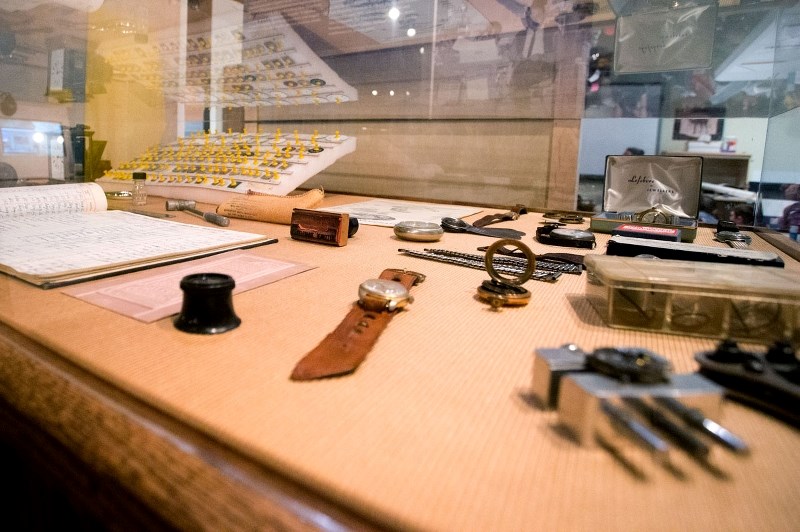Boudreau. Taché. Hebert. Perron. Levasseur. Giroux. The list goes on.
There’s a good reason why there are so many French names on the streets of this city. A really good reason. The history of St. Albert has a romantic accent on it from the very first days of the mission and earlier even.
That’s why the MusĂ©e HĂ©ritage Museum has just opened a new exhibit to showcase the history of our French founding families and some of those early settlers and entrepreneurs.
Francophones in Alberta: Courage and Determination – or in the parlance of the parleurs, Les Francophones de l’Alberta: Courage et DĂ©termination – is based on the Francophone Archives Project, a joint effort between the Provincial Archives of Alberta and the Francophone Secretariat of Alberta.
Archivist Vino Vipulanantharajah said that St. Albert just wouldn’t be the same if it weren’t steeped in such French history. Our francophone roots are incredibly important to who we are now.
“It’s of the topmost importance, I would think,” he stated, remarking on the prominence of the francophone mission and settlement.
Their influence was not just important to the development of this region but also the province and the west in general, he said. The Sisters of Charity Grey Nuns from Montreal built the first hospital and residential facility, also known as a maison d’accueil, in what was still the Northwest Territories here.
In 1888, almost 30 years before the province itself was established, there were approximately 1,000 people in St. Albert, slightly more than 850 of which were French or MĂ©tis.
“That’s something that I don’t think a lot of people would know,” he said, noting that he came from the eastern part of the country. He suggested that it isn’t something that he would have guessed if he weren’t so deeply entrenched in history, and speculated that many others from Ontario would not have either.
People from Quebec, on the other hand, might have had a different view. Many of the names in this exhibit were from families who came from regions of Canada’s belle province, as it were. The history lesson here is a good starting point for many of us who might be unfamiliar with our deepest roots.
It’s the cornucopia of artifacts that really captures attention here. Watchmaker Rolland Lefebvre’s desk is a real delight for the lover of tools and old cogs. If you love old pocket watches then he’s got the grandfather clock of pocket watches that you never knew existed.
That’s right next to Mary Callihoo’s magnificent gramophone and audio cylinders. It, too, is on the large side. Elsewhere, a mallet from the Delisle family is a hammer that would make Thor proud.
Visitors can learn about such important francophones as Marcel Lambert, Prosper-Edmond Lessard, Lucien Boudreau, Jean Léon Côté, Amédée Forget, and Arthur Boutilier who were all involved in politics at the provincial or federal level, or both.
There’s also the story of L’Ă©toile de St. Albert, a prominent French language newspaper that can now be accessed online courtesy of Peel’s Prairie Provinces at the University of Alberta.
And long before Lois Hole, there was author and amateur horticulturalist Georges Bugnet, known by nom de plume Henri Doutremont. In addition to writing several acclaimed novels, he also bred roses including the hardy Thérèse Bugnet rose named after his own sister. You can still see it blooming in gardens all around town.
In 1970, Bugnet was given the Ordre des Palmes Académiques for his contributions to French culture. He died a decade later in St. Albert.
Francophones in Alberta runs until June 21. Visit www.museeheritage.ca or call 780-459-1528 for more information.



